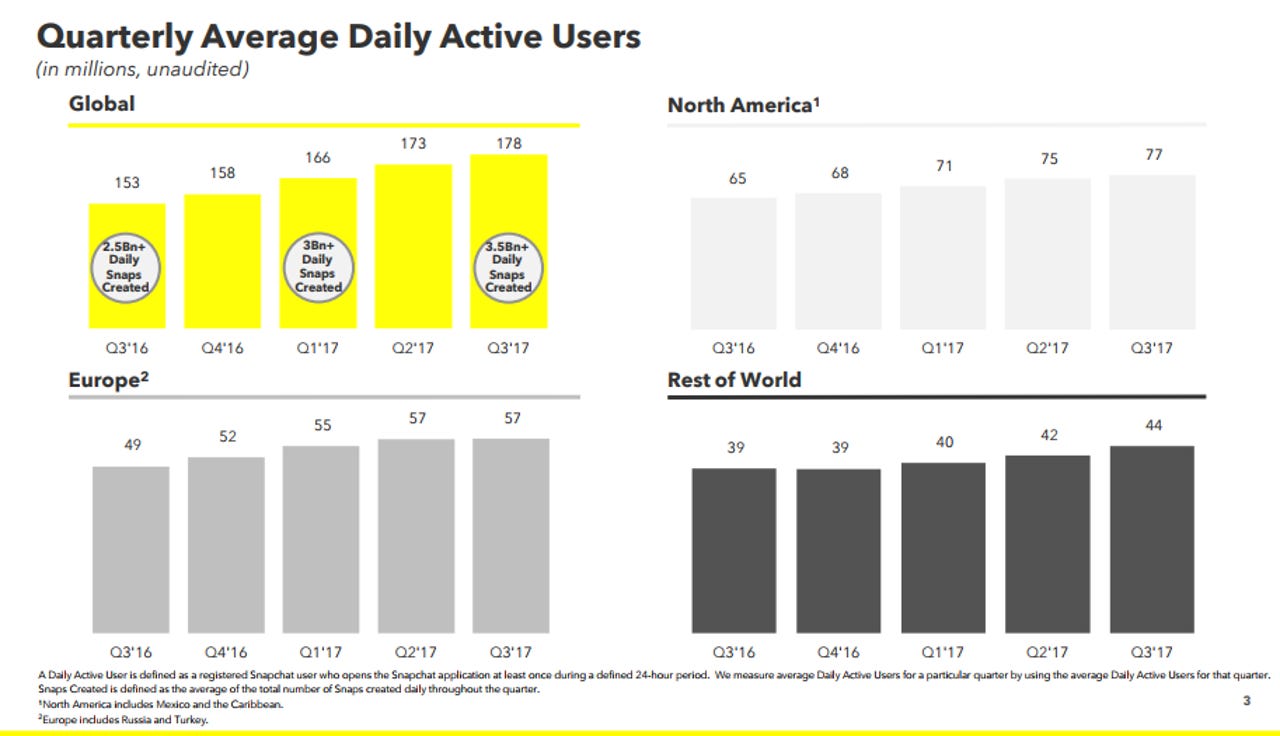Snapchat gets Android developer religion -- better late than never


Snapchat's user growth fell short of expectations. Now the company is hoping Android can pick up the slack.
Android app users rejoice. Snapchat has just discovered that developing better for Android will boost its global reach, user base, and, perhaps, even help it hit its financial targets for once.
CEO Evan Spiegel on Snapchat's third quarter earnings conference call -- another clunker -- outlined the difficulty with developing for the various flavors of Android, and then he noted the company is doubling down on the platform.
What's alarming from a management perspective is that Snapchat is just coming around to realizing that it needs Android to reach all markets around the world. After all, Android has 85 percent of the smartphone OS market, according to IDC.
The challenge will be improving the Snapchat apps when there are more than 60,000 variants of Android to work with.
Now, Snapchat is going to have its share of headaches. The company's third quarter report was another disappointment as earnings and revenue fell short of expectations. User growth in the quarter was also a disappointment.
The company reported a third quarter net loss of $443.16 million on revenue of $207.94 million. Snapchat also reported daily active users of 178 million in the third quarter, up 17 percent from a year ago. Those financials aside, Snap still has a social user base that's appealing. For instance, Tencent has acquired more than 145 million shares of Snap, according to a regulatory filing.
To boost usage, Spiegel said the company will redesign its app to boost audience. That redesign could be disruptive at a time when Snapchat can't afford any mistakes. After all, Snapchat also acknowledged another key mistake: Failing to develop for Android well.
Snapchat noted the Android engagement conundrum in its quarterly regulatory filing:
The majority of our user engagement is on smartphones with iOS operating systems. As a result, although our products work with Android mobile devices, we have prioritized development of our products to operate with iOS operating systems rather than smartphones with Android operating systems. To continue growth in user engagement, we have and will continue to prioritize improving our products' operability on smartphones with Android operating systems. If we are unable to improve operability of our products on smartphones with Android operating systems, and those smartphones become more popular and fewer people use smartphones with iOS operating systems, our business could be seriously harmed.
Spiegel, on an earnings conference call, said Android is critical to the company's global growth. By focusing on iOS, Snap gave the biggest chunk of the global smartphone market the cold shoulder. The most surprising thing about Spiegel's comments is that Snapchat apparently didn't put emerging market growth and Android together before.
He said:
As part of our quality efforts, we have been building a new world-class device lab for test automation and quality assurance. We've also distributed a wide variety of Android handsets across our engineering organization to ensure that we have ongoing qualitative feedback on Android application performance and design. In Q3 alone, Snapchat was used on over 60,000 different Android model variants. Given the sheer volume of different Android handsets used to access Snapchat, we have had to establish new processes to ensure that our quality efforts can be maintained. This will be an ongoing investment, but I am pleased to say that this quarter, monthly crash rates across both iOS and Android reached an all-time low since we started tracking this metric early last year.
Specifically, Snapchat improved Android camera startup time by more than 20 percent.
Read also: Are influencers turning away from Snapchat?
Spiegel continued with his Android riff:
We are fortunate to grow our business from a position of strength with the young audience in a developed world, the tip of the spear that drives broader adoption trends across the technology ecosystem. For example, we now reach over 70% of the 13- to 34-year-old population in the U.S., France, the U.K. and Australia. However, in order to further scale our user base, we need to accelerate the adoption of our product among Android users, users above the age of 34 and users in the rest of world markets. This means that we will have to make some changes to our product and business.
To attract more Android users, we are building a new version of our Android application from the ground up that we will launch in select markets before rolling it out widely. This new version of our application leverages everything we have learned about building for Android over the past 5 years to provide a more performing product experience that we know our community will appreciate. This effort requires significant engineering resources across all of our engineering teams and will be a huge focus over the coming year. After seeing the results of increasing Android performance over the past few months, with significantly more Android users added than iOS users in September, we wish we had done this sooner.
If Snapchat would have figured out Android has the most global share around the globe earlier, maybe it wouldn't be in its current financial pickle.
Previous and related coverage
Snapchat's first hardware product will be available this fall for $129
Snapchat is releasing its first wearable under a new corporate name change -- Snap Inc, a new WSJ profile reveals.
Facebook adds Snapchat-like camera features to main mobile app
The new camera features, rolling out now on iOS and Android, replicate Snapchat's Stories and can be launched by swiping right from News Feed.